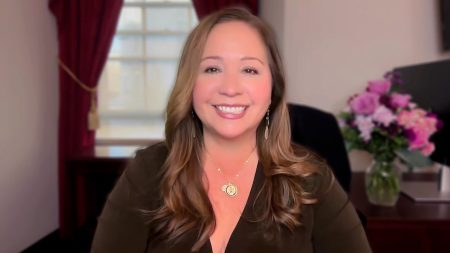Celebrating Black History Month: A Profile of Civil Rights Activist Carol Rogoff Hallstrom

When, as an American, Jacob performed well in school, he was not persecuted, as he would have been in Ukraine, but instead offered a scholarship to Yale University. From there he went to medical school, also on scholarship, where he won the Campbell Gold Medal as the graduate with the highest ranking of all students. And, like so many first-generation immigrants, he remained in awe of the freedom and opportunity that the United States offered him—and, in theory, every American.
Reared in such an atmosphere, Carol’s recognition of social injustice made it impossible for her to close her eyes to the blatant victimization of black Americans. While still a college student she began working with the Student Non-violent Coordinating Committee (SNCC) on Freedom Rides and sit-ins. The summer after her graduation from Beaver College (now Arcadia University) outside of Philadelphia, she became a fulltime member of the SNCC staff working on desegregation efforts, first in Maryland’s Eastern Shore and then in southwest Mississippi.
Evidence of Rogoff Hallstrom’s early years as a civil rights activist lines the walls of her small study in Asheville. News clippings, photos, and documents of her days with SNCC are collected there, leading some of her friends to refer to the room as “the white girl’s museum.” The display, and her history, well deserve the title.
One story that immediately catches the eye is a yellowed, framed, N.Y. Post article datelined Cambridge, Md., July 11, 1963 under the headline, “White Girl Aids Negroes” and a photograph of a very young Carol Rogoff. [see photos on page 6]
In its narrative the story reports that “Carol, accompanied by three Negro boys…entered a segregated luncheonette on Cambridge’s Race Street. Almost before she could order an ice cream soda, she found herself being dragged through the store, across a sidewalk and into a police car.”
The Post’s reporting highlighted the fear that her parents lived with each time she joined a demonstration, participated in a sit-in, or got arrested. Her father worried that she had been hurt, hospitalized, or worse, but he was as proud as she was determined.
The day after her arrest in Cambridge she was released from jail, when the luncheonette owner declined to press charges, but her work with the Civil Rights movement was just beginning. She had been planning to study sociology that fall as a graduate student in New York, but Maryland’s Eastern Shore had been placed under martial law. “There were shootings, stabbings, dogs…and I thought, ‘How do I leave that and go into an academic setting and talk about the theory of how things should be?’ So I went full time on the SNCC staff.”
During the next two years she worked for SNCC organizing, educating, recruiting other young people to work for equality, and marching, walking, sitting-in, and otherwise striving to make equal rights a reality for all. She did support work in the New York office and then was “in the field”—a field organizer in southern Mississippi—through 1964 and ’65.
One of the gentlest moments in our interview comes when we talk about her work encouraging other young people to join the movement. She tears up as she recalls, “I recruited Andy,” speaking of Andrew Goodman, who, with James Chaney and Michael Schwerner, was murdered in Philadelphia, Mississippi in one of the most high-profile atrocities of the era. “But so many people died,” she emphasizes. “People we don’t know about, people you’ll never hear of, whose families know only that …” Rogoff pauses. “That they disappeared and were never seen again. We know about the Chaney, Schwerner, and Goodman deaths because two of those three young men were white.”
It’s clear that such compassion is a major impetus for her work. “One reason this story is coming out now is that it’s time,” she says. “The AP is putting some archival stuff on line, Jet is, so there’s some awareness of it. But it’s so important to remember all the people whose names we don’t know who were killed, who were hurt, the people who taught my generation about courage and strength and the necessity of standing for something.”
Freedom Summer – 1964
As a SNCC staffer Rogoff Hallstrom worked with such luminaries as SNCC national chairman John Lewis (now a Congressman from Georgia); Stokely Carmichael, who later left SNCC for the more radical activism of the Black Panthers; and Fannie Lou Hamer and Aaron Henry, who led the Mississippi Freedom delegation to the Democratic National Convention in Atlantic City, NJ, during the historic Freedom Summer of 1964.
That year the Democratic Party’s national convention was held in Atlantic City, New Jersey. The convention was envisioned by its party leaders as an opportunity for healing, a time to nominate Lyndon Johnson for a full term following John F. Kennedy’s assassination. A southerner from the Texas hill country, LBJ was an unlikely hero of racial reconciliation, but like General Eisenhower warning against the military-industrial complex and Richard Nixon going to China, he was the one who persuaded Congress to pass what was trumpeted as JFK’s legacy, the Civil Rights Act of 1964.
Democrats were starkly divided over the law, with almost every southern Democrat voting to oppose it, losing to a bipartisan coalition of moderate Republicans and Democrats from the Northeast, the Midwest, and the West. Yet when the 1964 convention was planned, Johnson expected to be rewarded for his pro-Civil Rights stance, though unity demanded that the party accept each state’s own delegates, including the virulently racist southerners.
But thousands of new black voters had been registered in Mississippi during Freedom Summer, and they were determined not to be represented by an unreconstructed, anti-Civil Rights delegation of racist white men. So the integrated Mississippi Freedom Democratic Party was organized and sent its own delegation to the convention, with voter registration activist Fannie Lou Hamer and Clarksdale pharmacist Aaron Henry as its two official delegates.
“The integrated delegation followed every rule of the DNC, unlike the ‘regular’ delegation,” recalls Rogoff Hallstrom. “We drove up to Atlantic City, busloads of folks. Ed King, the chaplain at Tougaloo College, many Mississippi folks who were part of the organizing group, plus SNCC staff…and our naïve expectation was that there would be some recognition of this delegation.”
News coverage at the convention was virtually uncensored, and the television networks filmed Mrs. Hamer and the other delegates at every opportunity: the story was huge, and she was a powerful spokeswoman for the cause of equal rights. Having been brutally beaten in her attempts to register black voters in Mississippi, Mrs. Hamer told the Credentials Committee, “I am sick and tired of being sick and tired.” The words are now engraved on her headstone.
Rogoff Hallstrom continues, “Mrs. Hamer’s testimony was so compelling that many people in the country began to notice and understand the depths of exclusion faced by black people. It was 1964—the Civil War was a hundred years gone, the Thirteenth, Fourteenth, and Fifteenth Amendments had been enacted a century before—and yet the right to vote was still denied to large numbers of our fellow citizens. We went before the Credentials Committee, the Rules Committee, with folks from the ACLU; Joseph Rauh of Americans for Democratic Action and others helped to argue the case. And the party came back with an offer of two seats.”
The offer led SNCC staff members to a lot of discussion and debate, but it was up to the MFDP delegates, not SNCC staff, to decide what to do. Huge pressure was brought by the party to accept that compromise, which would let the party determine who would be the two delegates—the establishment didn’t want the eloquent Mrs. Hamer to be one of them.
Rogoff Hallstrom smiles and shakes her head. “Hubert Humphrey was LBJ’s personal representative to pressure the delegates to accept the compromise. He wanted to be Johnson’s vice president [and that was what Johnson required him to do]. For many of us it was a demonstration of the way political power works.
“Nobody, to my knowledge, questioned the process that had been used by the MFDP. It did change the way delegations would be elected in future years. But the national Democratic Party’s effort to squelch protests, to get these folks off camera, that pressure was enormous,” says Rogoff Hallstrom.
In the end the Mississippi Freedom Democratic Party delegation rejected the compromise, making it clear that, in Mrs. Hamer’s words, “We have not come this far to be treated this way.” All the delegates, staff, and supporters left Atlantic City and returned to their voter registration work.
 
|
| Maryland police haul Carol Rogoff, 21, of Brooklyn, a college student, toward their car. (left) She and three Negro youths were arrested for sit-in at segregated restaurant in Cambridge (MD). At right, she is pushed into car for trip to jail. Later the charges were dropped and the four released. AP photos from the N.Y. Post Thursday, July 11, 1963 |
Divisions In The Movement
The experience in Atlantic City was one of the factors that ultimately led SNCC and other civil rights organizations to look at goals and strategies differently.
“It was a seminal point at which some in SNCC began to argue for a more nationalist agenda, to question alliances, to ask whether it was enough to follow rules, to be on the side of right, when such powerful forces could still end up controlling the outcome. It had to be asked: how reliable are these historic alliances?”
The shift, beginning in 1965, that led to the decision by SNCC to ask its white staff to leave, was rooted in the experience of the 1964 convention. The view developed that when white allies begin advocating that blacks should compromise on principles, those alliances might no longer share the same goals and values.
“I left in ’65, so I was not there at the end of SNCC,” says Rogoff Hallstrom. “When I left I became involved in organizing in Philadelphia, with a group called People for Human Rights, advocating anti-racist activity in white communities.
“For some,” she continues, “the shift to a black nationalist agenda was seen as the equivalent of an anti-white agenda, and SNCC was seen as having become an anti-white organization. But the shift was a legitimate regrouping and reassessment of what was strategically appropriate to finish the unfinished business of achieving racial justice.”
Perhaps the most prominent SNCC leader was Stokely Carmichael, who had been on the staff for a long time. As SNCC staff reassessed the strategies and goals of the movement, he emerged as the most vocal advocate for black power. His eventual departure to help lead the new Black Panther Party signaled and solidified his shift to a more separatist approach to the development of black equality.
Rogoff Hallstrom says, “There are many different views about this shift within the movement. I can only talk for myself. There had always been folks who adopted nonviolence as a philosophy and others who adopted it as a tactic or strategy. There were some folks who were moving away from desegregation as a goal, away from white alliances; others still saw those as legitimate but questioned the value of alliances as a strategy. For those of us who did not view the shift as a dismissal, it meant simply that there was still a lot of work to do, but using different tactics with different constituencies.”
But Rogoff Hallstrom acknowledges that in the aftermath of the separation, there were some bad feelings and deep divisions. “Historically there had been alliances that were widely recognized—groups of people who had very different experiences, but also commonalities in the history of persecution and oppression that they faced. For Jews it was centuries of persecution in Europe, and prejudice and discrimination in the United States; for blacks, it was being treated as chattel, owned by other people.
“As the direction of the civil rights movement shifted there were some in the white community, and in the Jewish community, who said if you don’t want me in the organization, you can’t have my money.” A disproportionate number of participants were young Jewish kids, and a lot of financial support came from Jewish families. Their withdrawal of support created tensions in the historic alliance between blacks and Jews, a tension that still exists in spite of some initiatives to address it.
Working For Social Justice
After returning from Mississippi, Rogoff Hallstrom went to Boston University Law School, from which she graduated in 1975. She spent most of the next three decades founding or leading other nonprofits involved with civil rights, civil liberties, and human relations.
 |
| “The white girl” who became a Civil Rights activist as a college student, Carol Rogoff later served as a staff member of SNCC (Student Non-violent Coordinating Committee). Photo courtesy Carol Rogoff |
For many years she was Regional Director of the National Conference of Christians and Jews, initiating anti-racist programs for youth and organizing Martin Luther King events and civil rights workshops. In southern California she did a lot of immigration work and founded an immigration coalition of more than fifty nonprofit religious, labor, and social service organizations. When in 1986 Congress passed and President Ronald Reagan signed an amnesty and legalization bill, the coalition provided free and low-cost legal services to more than 75,000 legalization applicants. She was the founding director of a community mediation program in San Diego and was staff attorney for the Center for Criminal Justice, working on police policies and practices.
During the presidency of Bill Clinton, Rogoff Hallstrom was appointed by Attorney General Janet Reno to a federal immigration commission as one of a handful of non-government employees who had been active nationally on immigration issues. “Because I was outspoken and candid, I was asked if I’d consider working for the government; after extended deliberation, I decided to go to work for the Justice Department under Reno.” There she had the opportunity to investigate ways to bring community policing policies into federal law enforcement, especially to Immigration Services, and ways that communities could have a role in developing policy.
“After 911 that function was put into the new Homeland Security Department. I was a very lonely voice inside that department as an advocate for the community’s role in developing public policies that fairly balanced national security concerns with civil liberties.”
Rogoff Hallstrom hopes that her message, her legacy, will be to move other young people to find their voices, to take risks, and even to serve in government for a period of time. “You sometimes have to be inside, at the table, for your opinion to be heard. It’s so important to have people with a variety of ideas and opinions serving in government, because otherwise those voices will never be heard.”
The Next Phase
Rogoff Hallstrom’s experience will be useful in her new role as a member of Asheville’s Citizens Police Advisory Board. The board has been perceived by many as toothless, and until recently has been relatively dormant; Rogoff Hallstrom is already working diligently to make it an active, functioning board with benefits both for the community and the police department. She has already undertaken “a pretty aggressive effort” to expand the board’s membership and make it more representative of the community at large.
Her “aggressive effort” is no surprise. She visited Asheville first to see her son and daughter-in-law; after several more visits she wanted to see whether Asheville might have work she would be interested in, and she moved here from Philadelphia in 2009. She quickly realized that unlike bigger cities with a more visible African American population, there was a shortage of “natural” opportunities to get connected; here she would have to be more intentional. She had seen something in the newspaper about Building Bridges, so she participated in a session; now she’s in her second nine-week session as a facilitator. There she also met Jackie Simms, who like her is interested in interfaith work; both women are active with the Mountain Area Interfaith Forum.
This year Rogoff Hallstrom also served on the planning committee for the Martin Luther King Prayer Breakfast. Last spring, after returning from Raleigh, where the 50th anniversary of the founding of SNCC at Shaw University was observed, she attended the commemoration of the sit-ins at the Asheville Woolworth’s; by chance she sat with Oralene Simmons, who founded Asheville’s prayer breakfast and soon invited her to help with this year’s celebration.
As she puts her life-long work towards human rights and civil rights in the perspective of her new life in Asheville, Carol Rogoff Hallstrom notes that many of the same questions still arise. “Even today we continue to address economic and educational disparities. We must always consider, when it’s time to march, to picket, to negotiate, to educate, or to work from within, which tactic will be most valuable in achieving your goals.” She sees her role increasingly as providing support and encouragement to young, emerging community leaders, to encourage them to assume their rightful roles as the voices of change in a community still beset by inequality of opportunity and outcome.
She also looks at Asheville’s Jewish and black families that she has been reaching out to and wonders, “Do we respect that historic alliance? Is it still an important alliance? Are there still real or perceived threats to our respective communities, continuing injustices? Do we still have the values of justice and equality that are necessary to forge relationships of respect?
“We had many shared values and shared aspirations. The goals we tried to achieve of social justice and equality took a higher priority than our differences. It might be that all the work I’ve done in my life has been the consistent theme of creating that world.”
As we finish our talk, Carol Rogoff Hallstrom has a final word in explanation of why that work is so important. Quoting the words of Anne Frank’s diary, she says, “I still believe that people are good.”






